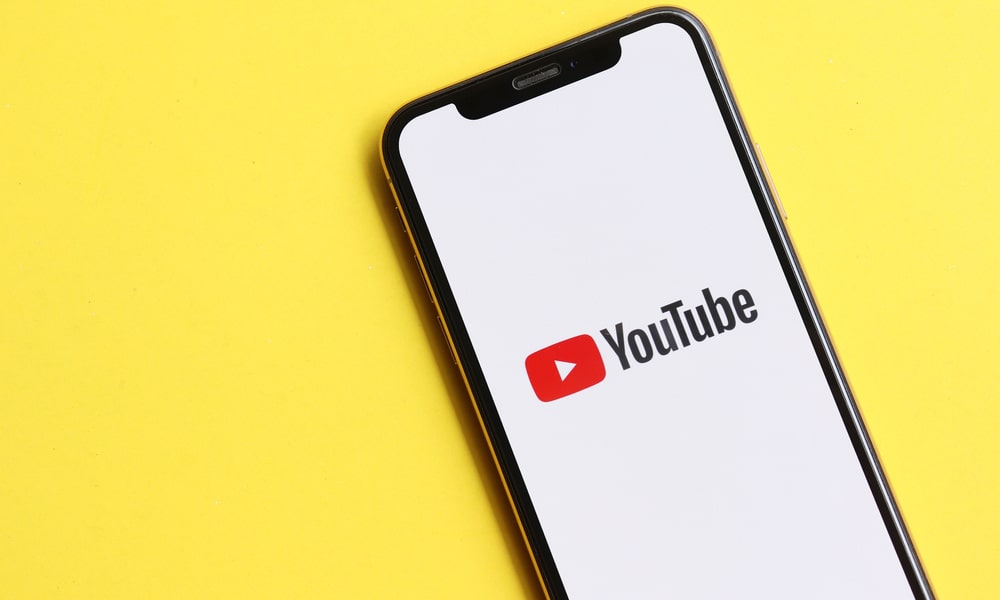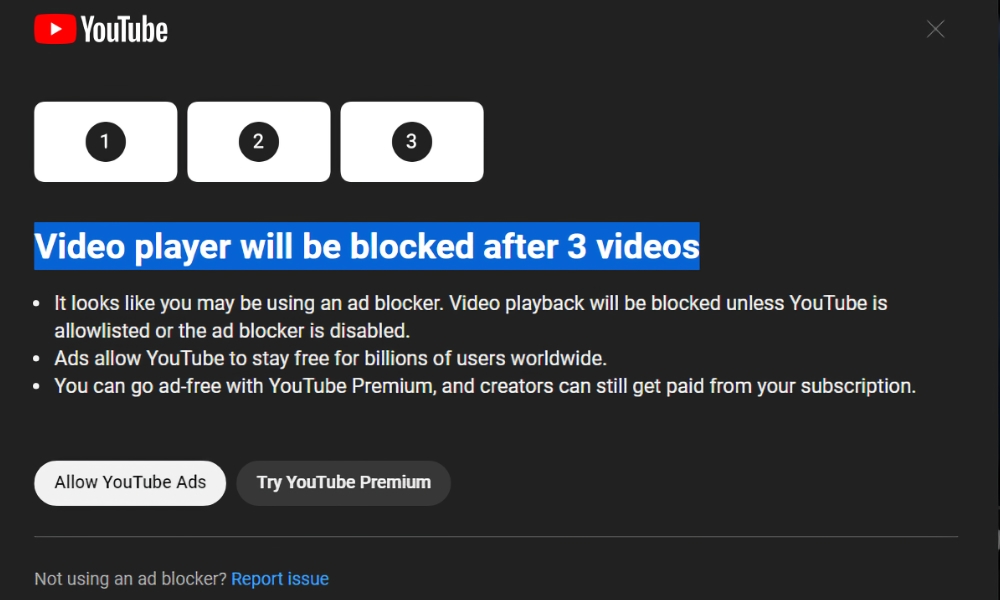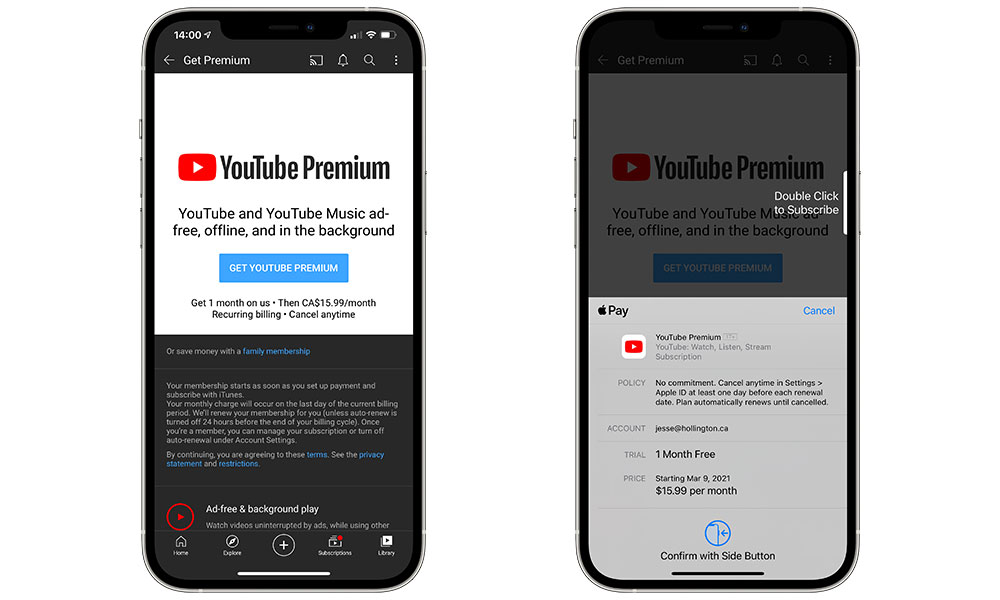YouTube Is Cracking Down on Ad Blockers
 Credit: A9 STUDIO / Shutterstock
Credit: A9 STUDIO / Shutterstock
Toggle Dark Mode
It seems that streaming services everywhere are becoming impatient with viewers getting what they consider a “free ride” to their services. We’ve already watched Netflix curtail password-sharing over the past year, moving from its friendly “Love is sharing a password” stance to a firm “one household” policy while simultaneously introducing an ad-supported plan and showing signs it may soon eliminate its most affordable ad-free plan.
Now, it seems YouTube is getting into a similar game, forcing users to either deal with all of the ads presented by the platform or pony up $12/month for an ad-free YouTube Premium plan.
There have already been some indicators over the past several weeks that YouTube was beginning to crack down on ad blockers, but now Google has confirmed to The Verge that it’s officially working on ways to “urge” users to disable their ad blockers — or pay up to turn off ads legitimately.
According to a company spokesperson, this is “a small experiment globally that urges viewers with ad blockers enabled to allow ads on YouTube or try YouTube Premium.”
For now, it appears that Google is taking a softer approach to encourage YouTube viewers to do the right thing, warning users rather than blocking their access. Google spokesperson Oluwa Falodun told The Verge that YouTube viewers who employ ad blockers will “receive multiple notifications urging them to cease using the tools before any of their viewing is disrupted.”
We take disabling playback very seriously, and will only disable playback if viewers ignore repeated requests to allow ads on YouTube.
Google spokesperson, in an email to The Verge
Based on the warnings that some YouTube users have already encountered, it appears that “repeated requests” actually only means three strikes, and you’re out. Reddit user Reddit_n_Me shared a photo of the notification that appears when using an ad blocker with a standard, non-premium YouTube account, which clearly states that the video player “will be blocked after 3 videos” unless “YouTube is allowlisted or the ad blocker is disabled.”
The notification also explains that “Ads allow YouTube to stay free for billions of users worldwide,” and that a YouTube Premium subscription will still allow creators to “get paid from your subscription.” As annoying as ads may be, Google isn’t wrong about this — there’s no such thing as a free lunch, and allowlisting your favorite websites is a good way to support content creators, both on YouTube and on the web at large.
Like Netflix and password sharing, Google has never officially allowed ad blockers to be used with YouTube. It merely hasn’t taken a hardline stance to prevent this behavior until now. However, unlike Netflix, neither Google nor YouTube has ever hinted that it’s okay to violate its terms of service, which clearly prohibits ad blockers when accessing the service.
This new “experiment” comes at a time when Google is also experimenting with increased advertising on its YouTube platform, suggesting that it’s begun seeing the same kind of impact on its bottom line that forced Netflix to get heavy-handed with password sharing.
Meanwhile, a YouTube Premium subscription will set you back $11.99/month — assuming you’re not buying it through the YouTube app, where Google adds Apple’s 30% commission on top of the normal fee. You do get a bit more for that than just an ad-free experience, though.
YouTube Premium subscribers also get YouTube Music Premium thrown in, plus the ability to download videos for offline viewing and a smoother experience with YouTube Picture-in-Picture (PiP) on your iPhone, which has been something of a confusing mess. As things now stand, YouTube users in the US require a YouTube Premium subscription to use PiP with certain types of content, such as music videos, while international YouTube users won’t be able to use PiP at all without YouTube Premium.
For those who would prefer to avoid paying another monthly streaming subscription fee just to avoid ads, the good news is that YouTube’s crackdown on ad blockers is just a “small experiment” that isn’t yet affecting most users. Still, it’s likely only a matter of time before Google works out the bugs and rolls it out far and wide.








